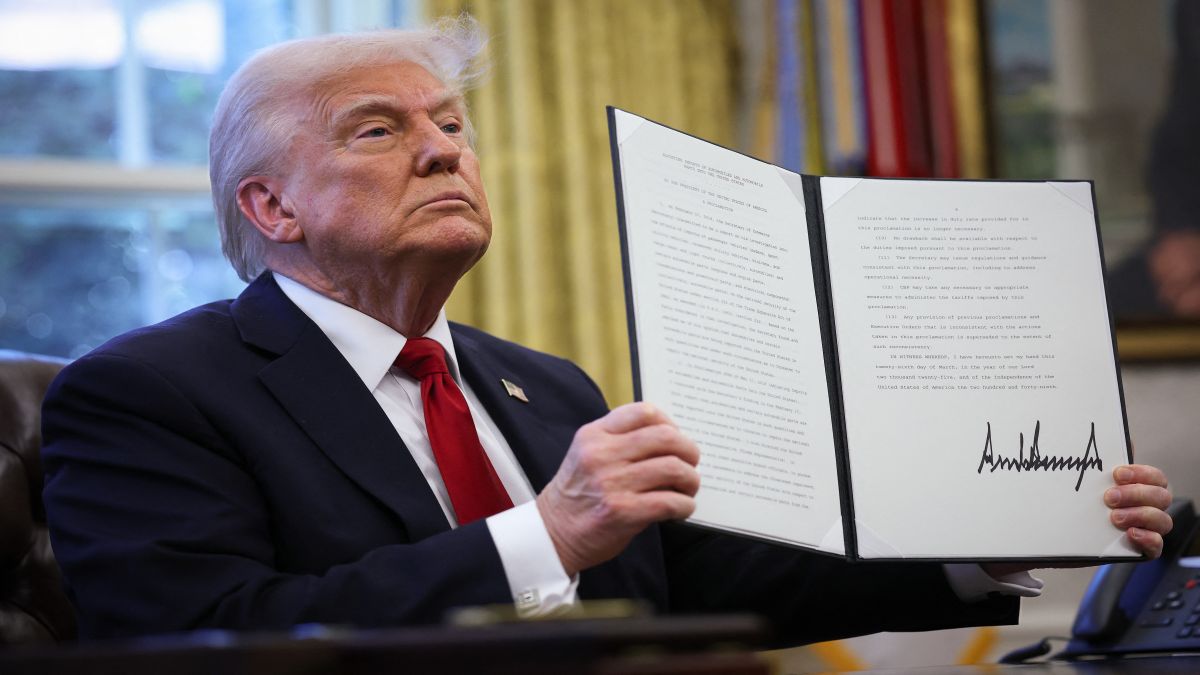‘Liberation Day’ is here.
US President Donald Trump on April 2 unveiled sweeping new tariffs on dozens of nations.
Trump announced a 10 per cent tariff on all imports as well as higher levies on the biggest trading partners – 34 per cent on China and 20 per cent on the European Union.
Trump levied a 26 per cent tariff on India.
“Taxpayers have been ripped off for more than 50 years,” Trump said from the Rose Garden of the White House. “But it is not going to happen anymore.”
The base tariffs go into effect on April 5 and the higher reciprocal rates on April 9.
But did the Trump White House arrive at such figures? What do experts say?
Let’s take a closer look:
How did the Trump administration calculate tariffs?
Trump has claimed that the tariffs are “reciprocal” and that the levies were a response to duties and other non-tariff barriers put on US goods.
However, those examining the rates insist that this is not the case.
The Guardian quoted New Zealand’s trade minister as saying his nation did not levy a 20 per cent tariff on US imports.
Meanwhile, Australia’s prime minister, Anthony Albanese said the US tariffs had “no basis in logic” and that “a reciprocal tariff would be zero, not 10 per cent.”
As per CNN, the Trump government seemingly took a given country’s trade deficit with the United States and divided it by its exports to the United States – times half.
This formula was first suggested by financial writer James Surowiecki.
“Just figured out where these fake tariff rates come from. They didn’t actually calculate tariff rates + non-tariff barriers, as they say they did. Instead, for every country, they just took our trade deficit with that country and divided it by the country’s exports to us,” Surowiecki wrote on X.
“So we have a $17.9 billion trade deficit with Indonesia. Its exports to us are $28 billion. $17.9/$28 = 64 per cent, which Trump claims is the tariff rate Indonesia charges us. What extraordinary nonsense this is.”
That number was then cut in half out of Trump’s claim he was being ‘kind.’
“Even given that it’s Trump, I cannot believe they said “We’ll just divide the trade deficit by imports and tell people that’s the tariff rate.” And then they decided to set our tariffs by just cutting that totally made-up rate in half! This is so dumb and deceptive,” Surowiecki wrote.
What do experts say?
Experts are as confused as anyone else.
They say it isn’t even right to classify these new policies as “tariffs.”
“While these new tariff measures have been framed as ‘reciprocal’ tariffs, it turns out the policy is actually one of surplus targeting,” Mike O’Rourke, chief marketing strategist at Jones Trading in a note to investors Wednesday was quoted as saying by CNN.
“There does not appear to have been any tariffs used in the calculation of the rate. The Trump administration is specifically targeting nations with large trade surpluses with the United States relative to their exports to the United States,” he added.
“Those numbers are not tariffs,” economist Kimberly Clausing wrote on social media.
“The European Union, for example, has weighted average tariff rates of around three percent and arguably lower on US goods. So they are clearly including [value-added taxes] and who knows what else? This false reciprocity is nonsense.”
How did the world respond?
Trump’s announcement of a new 20 per cent tariff on the European Union drew a sharp rebuke from European Commission President Ursula von der Leyen, who said it was a “major blow to the world economy.”
“The consequences will be dire for millions of people around the globe,” von der Leyen said. Groceries, transport and medicines will cost more, she said while visiting Uzbekistan, “And this is hurting, in particular, the most vulnerable citizens.”
Von der Leyen acknowledged that the world trading system has “serious deficiencies” and said the EU was ready to negotiate with the US but also was prepared to respond with countermeasures.
The British government said the United States remains the UK’s “closest ally,” and Business Secretary Jonathan Reynolds said the U.K. hoped to strike a trade deal to “mitigate the impact” of the 10 per cent tariffs on British goods.
“Nobody wants a trade war and our intention remains to secure a deal,” said Reynolds. “But nothing is off the table and the government will do everything necessary to defend the UK’s national interest.”
With inputs from agencies
)